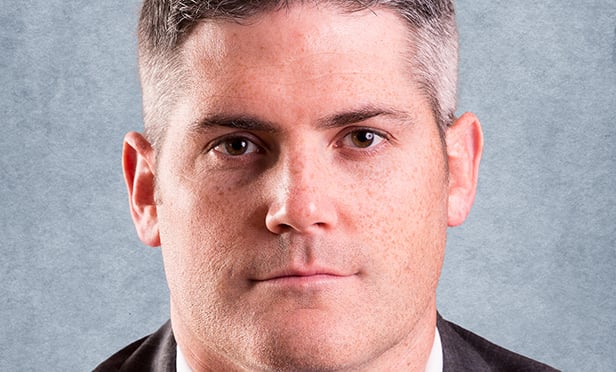[IMGCAP(1)]
SOUTHERN CALIFORNIA—Industrial real estate prices per square foot continue to climb in Southern California as the market tightens, land gets converted from industrial to residential use and increasingly more investors enter the fray. Voit Real Estate Services' Anaheim office recently facilitated the sale of a 54,000-square-foot industrial warehouse in Buena Park, CA for $131.50 per square foot, “a price point we haven't seen since the previous market peak of 2007,” says Seth Davenport, SVP, one of the executives representing the seller. And that's just one example. We spoke exclusively with Davenport, who handles the Northern Orange County market; Voit's Randy LaChance, SIOR, SVP, who handles the San Diego market; and Voit's Skyler Serrano, VP, who handles the Southern Orange County and Airport area, about their view on industrial price valuations in their particular markets.
GlobeSt.com: How much higher do you think industrial-property prices per square foot can go before a market correction occurs?
Davenport: This is the million-dollar question: where are we in the cycle? Historically, there's a trend that market peaks always surpass previous market peaks, and we're just now starting to see deals that are higher than the last market's peak pricing. We are near that, so the indication is that we are mid-cycle. How many years we have left in the cycle is hard to pinpoint, but we know we have significant room to grow, and all indications are that we will continue to see appreciation well into 2017.
LaChance: I don't think there's any correlation to pricing and a correction related to the economic cycle. In San Diego, investment sales have just recently surpassed the peak that was set in 2008, and we recently—across the board in most industrial markets—surpassed the pricing level properties were selling for in 2007. We are at less than 4% vacant in most San Diego submarkets, and our rental rates are basically at the peak from the previous market. It's deceptive because when you look at rental rates now, it looks like we haven't had any rental growth in eight years, but that's not what happened—it dropped 30% to 40% during the downturn and now it's finally recovered. But just because we hit the previous peak doesn't mean we're ready to drop. We've had peaks and valleys, but the trend line is typically in an upward direction.
We have a much more diversified economy in San Diego than before the recession, which was mostly caused by financing in the housing market. We're much more stabilized in that regard and not so defensed in the housing market like in the last cycle. Between tourism, shipbuilding, technology and biotech, our economy is diversified, so we won't get hit like before.
[IMGCAP(2)]
There's still room for growth on rental rates in San Diego. There's little supply of product and no buildable land in Central County, and the demand is steady. The slow economy between 2010 and 2013 has finally taken hold, with nothing being built and positive absorption for some 13 of the last 15 quarters. There are tight vacancy numbers, and interest rates are starting an upward trend. It's such a world economy now that you can't just look at the US. You need to look at Europe and China and a lot of factors get taken into account, but we're generally moving in an upward direction in interest rates. I think there's still room for upward movement in sales prices in San Diego County due to the lack of supply of product, strong fundamentals and a diversified economy.
Serrano: Considering the fact that we have already reached record highs in the Airport Area and South Orange County, I would say we may have another 10% of growth at most. We currently have the lowest vacancy rate in the last 20 years. In the Airport Area, we are at about 2.11% and in South OC we are at 3.71% However, I don't necessarily believe there will be a correction once we hit that peak; we may just experience the pricing remaining flat for a few quarters.
GlobeSt.com: Aside from increasing interest rates, what other factors might lead to a slowdown in industrial price climbing or even a price decline in your market?
Davenport: Election years are typically slower years in the real estate world. Uncertainty creates indecision and slowdown in velocity. Whether that will lead to a slowdown in pricing, I don't know. There are always geopolitical issues, such as Russia, the Greek meltdown and China. You never know what those might do to our market, but certainly those rarely have positive impacts, so that would be a risk. Interest rates are also a risk. When you have very low interest rates, it's easy for prices to appreciate, but if you had a 100 basis-point increase, it's actually 20% in the cost of real estate occupancy, so it's a big swing. Our market has so little vacancy I think we'll be fairly insulated from any significant market corrections, and any market corrections would be gradual because there's so little inventory in the market.
LaChance: It's something we don't know of yet. Interest rates will have an effect on the economy in some way—appetites, cap rates—but other than that, I don't see a lot of factors that we're in control of. There's ISIS, Greece folding, the Europe recession, China slowing down. Those factors and interest rates are on the only ones that I see that could have an impact on us.
Serrano: Obviously, the overall health of the US economy is a big factor—not to mention how the international economic issues may affect the health of our economy. On a more microeconomic level, I feel there's a price ceiling for some of the buyers in the marketplace, which is already decreasing the demand on owner-user purchases. It's hard for some potential buyers to justify buying a building when they have seen the pricing come up so much over the last few years.
GlobeSt.com: What types of industrial properties are most in demand in each of your markets now?
Davenport: Properties that are most in demand in Northern Orange County are the state-of-the-art, high-clearance, ESFR-sprinkler properties with all the bells and whistles, which are in tremendous demand. Developers can't build buildings fast enough before they're sold, and in many we have seen they're sold out before construction is complete. For anything functional with decent loading and anything over 20,000 square feet, there's so little product out there that there is a buyer that will be excited about purchasing it. The demand is pretty consistent; it's not like 30,000 square feet is hot and 80,000 square feet is not—it's pretty consistent given the low vacancy in all markets.
LaChance: San Diego is a smaller market than Orange County and a cul-de-sac community: we have the ocean, the desert and Mexico as our borders, so we don't attract the large users. We're a small-market economy, so our multi-tenant space up to 50,000 square feet is in good demand—not high demand, but good. It's a slow economy. In '06, I literally had guys lined up out the door to lease space; today, it sits longer—but not as long as during the recession, and the demand is steady and across all sizes from 1,500 square feet to 50,000 square feet. Quality space that's functionally not obsolete and high-bay, sprinklered warehouse and manufacturing buildings are doing well.
Serrano: For the Airport Area and South Orange County, there is a lot of demand for newer-quality industrial facilities, and there are very few from which to pick. For example, there are approximately 20 buildings available for sale in the size range of 30,000 square feet to 200,000 square feet in the Airport Area and South OC. Out of those, only four buildings have 24-foot clear or higher and dock loading. In an effort to achieve their desired clear height, some companies are increasing the clear of their buildings by removing the roof, adding to the building's clear height and putting the roof back on. A prime example of this is the Tilly's building down in South Irvine. They took their clear height from 24 feet and increased it to 50 feet on their 81,159-square-foot facility.
GlobeSt.com: What else should our readers know about valuations in the industrial market?
Davenport: We've seen a significant increase in rental rates, so the concept of leasing vs. buying is very much a real discussion right now. Even though buyers and tenants have a very clear memory of what happened in 2009-2012, they still recognize that they have to have a place to operate their business and that will add to their cost. The general tendency is that they want to own.
LaChance: What is interesting in San Diego, and I've been doing this for 27 years, is that Otai Mesa down on our south end has typically had a high vacancy rate, and Oceanside up north, too. Now, as we've gone through the years, more and more of that land has been absorbed, and we're now running out of land across the county to build. This is the first time you could ever say that. There was always land at the bookends of San Diego, but now with very little land to build on, as long as the economy stays on an upward path, we'll continue to see rent growth. It's a matter of supply and demand.
Serrano: Some cities are putting residential-overlay zones in the industrial areas. A local prime example is the city of Irvine. There have been several new apartment projects completed in the last couple of years. And there are even more under city review or under construction. If an ownership has an industrial in this overlay zone, they can expect to get a $100 to $150 premium for their industrial building. So, your $200-per-square-foot industrial building just went to $350 per square foot, assuming it is in a desirable location for multifamily development.
© Touchpoint Markets, All Rights Reserved. Request academic re-use from www.copyright.com. All other uses, submit a request to [email protected]. For more inforrmation visit Asset & Logo Licensing.






